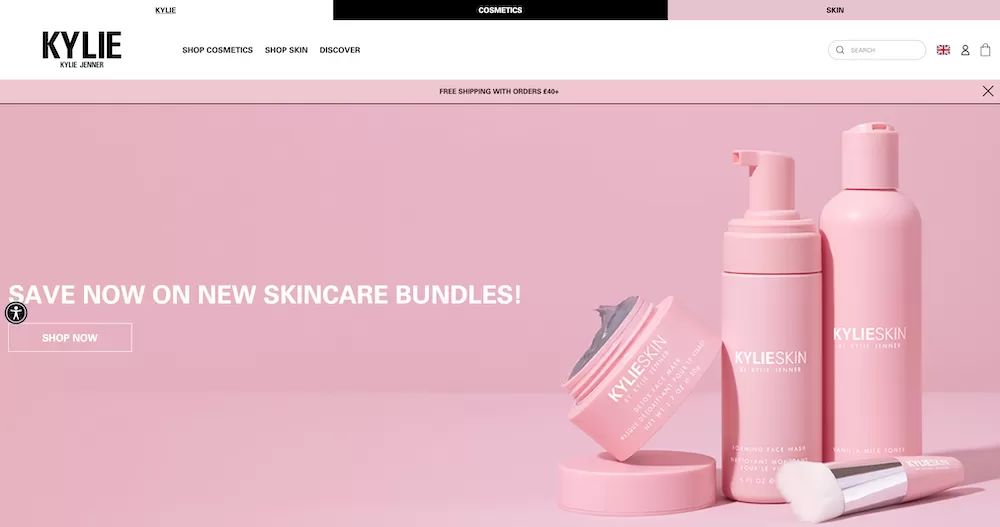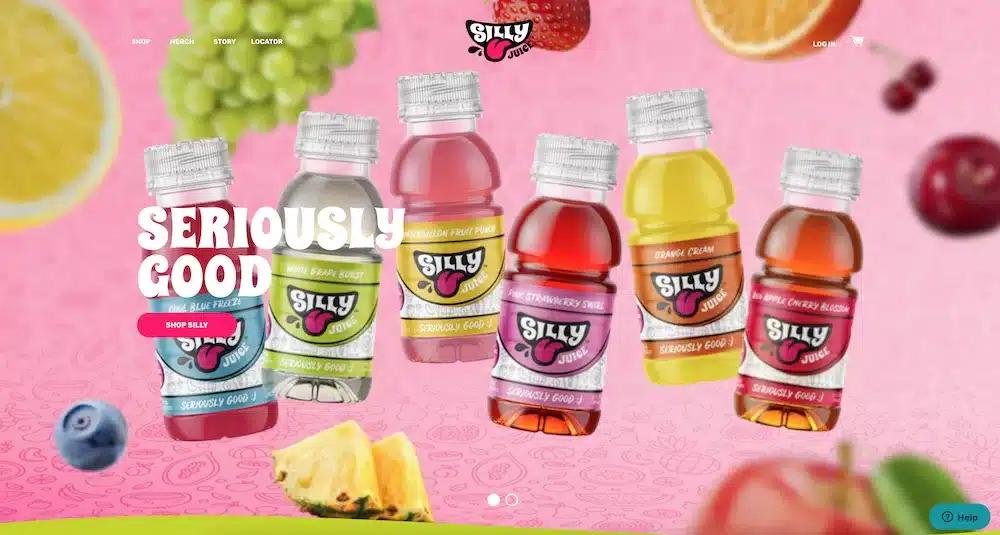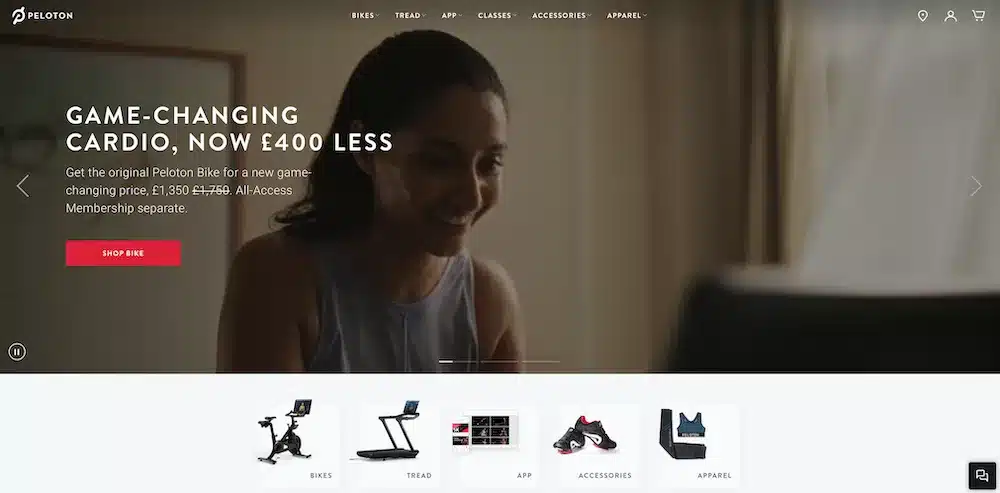The changing face of DTC. Ecommerce sales are up 31.3% year over year. And we’re seeing a slew of physical retailers (like Best Buy and Target) rapidly transition towards a direct-to-consumer model. So whether you’re in the DTC space. Or want to invest in a DTC business. This list of DTC trends will help you see what’s coming around the corner.
1. Influencers Launch Their Own DTC Brands
DTC companies, including Casper, Allbirds, Bonobos, and Warby Parker, famously used influencer marketing to grow their startups in record time. Which is one of the reasons that influencer marketing became a DTC mainstay: compared to PPC and SEO, influencer marketing resulted relatively low customer acquisition costs (CAC).
Influencer marketing is getting more expensive. And many influencers are eschewing sponsorship deals. Instead, many social media influencers are launching their own direct-to-consumer brands. Instagram influencer Kylie Jenner’s Kylie Cosmetics is probably the most famous example of the “Influencer Entrepreneur” DTC brand.

But it’s far from the only influencer-founded DTC business. For example, supplement company Truvani was launched by a pair of influencers: Social Trigger’s Derek Halpern and “The Food Babe” Vani Hari. Both co-founders leveraged their existing audiences (and digital marketing expertise) to help get their DTC supplement brand off the ground.
Laird Superfood, founded by influential pro surfer Laird Hamilton, has also seen rapid and significant growth. And even went public on the NYSE last year. In the past, Halpern, Hari and Hamilton may have been interested in traditional influencer marketing deals. But, like many influencers in 2021, they’re busy starting (and growing) their own DTC companies.
2. Food And Beverage DTC Skyrockets
The food and beverage category is now the fastest-growing ecommerce category on the planet. In fact, according to emarketer, the food and beverage DTC space is set to grow by 21% by the end of 2021. Part of this growth is due to the boost in grocery delivery during COVID.
But the food and beverage DTC space is also growing due to a slew of new players in the space. For example, Magic Spoon is a low-carb breakfast cereal suitable for the keto diet. Unlike traditional cereal, you won’t find Magic Spoon in any supermarket. They’re 100% DTC.
Another emerging food and beverage DTC brand is the natural juice brand, Silly Juice.

3. Increased Competition Within Categories
Not long ago, selling mattresses online was completely novel. Flash forward to today, and there are dozens of DTC mattress companies (including Purple Mattress and NectarSleep) fighting for market share. It’s the same story with the eyewear space.
Warby Parker had a brief first-mover advantage. But they’re now competing against emerging competitors, like Lensabl.
Part of the reason for this increased competition within DTC categories is that it’s significantly easier to launch and grow a DTC company than even a few years ago. Platforms like Shopify make setting up an ecommerce site relatively quick and easy. And services like Floship can take care of shipping, logistics and returns.
All of which lowers the barrier to entry for anyone that wants to compete with a DTC company that’s gaining traction in a space.
4. DTC Brands Offer Flexible Payment Methods
With shopping cart abandonment rates hovering at around 67%, many ecommerce platforms are loading up their carts with payment options, like Apple Pay and Google Wallet.
And a growing number of DTC sites are offering “buy now, pay later” (BNPL) options for their expensive products. One of the leaders in this space is Australian-based Afterpay. Like most BNPL services, Afterpay divides up a customer’s purchase into several installment payments that are charged to the customer’s credit card over time.
5. DTC Envelopes Completely New Categories
Mattresses and eye wear might get all of the attention. But we’re seeing a number of companies launching DTC brands in totally new categories.
For example, breast pumps. Breast pump DTC company Haakaa has seen rapid growth due to a highly-regarded product. Intimate knowledge of their target demographic. And highly-effective influencer marketing. But also because they were one of the first breast pump brands to focus on DTC over retail.
Tacklife, a DTC company that sells power tools, is another example of this DTC trend. Power tools are the exact type of heavy, bulky product category that’s ideal for trying and buying at a physical store. But as Tacklife is proving, there’s a market for people that want to buy tools online.
Convenience stores are another category that’s getting disrupted by the DTC model. goPuff offers consumers same-day delivery on items that you’d normally buy at a brick and mortar store: snacks, cold drinks and cleaning supplies.
6. Social Media Shopping Goes Mainstream
The old customer experience flow of “see a product on Instagram–>click a link in the description–>buy the product” is quickly breaking down. Social shopping is quickly integrating ecommerce into social media platforms. And it’s becoming an increasingly common way for members of GenZ and millennials to shop online.
With social shopping, consumers can buy items without needing to go through an entire checkout funnel. Plus, social media platforms get a cut of the action. For example, Instagram Checkout lets users buy products that they see in their feed. Without needing to navigate away from Instagram.
And TikTok is rolling out a beta program called “Small Gestures” to see how their user base reacts to Social Shopping.
7. The DTC Fitness Space Continues To Grow
Peloton’s revenue hit an all-time high of 1.06 billion in Q2 2021. After raising a $550M Series F in 2018, the startup IPO’d in late 2019 at an $8.1B valuation and now has a $44B market cap. And the connected bike maker just increased its 2021 fiscal revenue projection to $3.9B (up from $3.5B).

A huge reason for this is that 77% of city-dwelling Americans now exercise 3+ times per week at home as a result of the COVID-19 pandemic. And 60% of people plan on canceling their gym membership even after lockdowns end. Which is expected to transfer approximately $10B in annual revenue from gyms to at-home exercise solutions.
Many of which will cut out the middlemen and sell their equipment directly to consumers. Significantly, Peloton generates 20.6% of its revenue from $39/mo subscriptions. This recurring revenue exhibits little churn (Peloton has a 92% 12-month retention rate). Which probably comes with little surprise given that the Peloton bike hardware retails for $1,895 and the treadmill for $2,495 from the get-go.
Numerous DTC fitness startups are attempting to recreate Peloton’s successful “hardware + software + subscription content” model. Which means create a device for X and add a recurring revenue model via live classes:
FightCamp is Peloton for boxing. The product itself is a smart punching bag that connects to an app for tracking punches. FightCamp is also heavily monetized with a monthly subscription model (the product requires a $39/mo membership to use). The company has raised $620k in funding to date. Punchlab and Liteboxer are also startups in the “Peloton for boxing” space.
Interest in CLMBR’s machine skyrocketed after it was announced that Jay-Z and Novak Djokovic will partner with the startup. And then searches shot up again when they raised their first round of $3.4M in November last year. Tonal for strength training. Tonal has raised $200M to date, including a $110M Series D in September. The company reported a 12x increase in sales last year.
Mirror is the Peloton for equipment-free workouts. Mirror’s smartscreen also tracks user movements. After raising $74.8M in VC funding, Mirror was acquired by Lululemon in July for $500M. JaxJox for kettlebells. Also has Mirror-like tracking features. The company raised a $10M Series A in October from Dowgate Capital and others. Hydrow: Peloton for indoor rowing. Hydrow has raised $64.8M since launching in 2017. Including a $7.7M round from Alumni Ventures in July. And Zwift is Peloton for your own gear.
Customers can use their own bicycle and monitor (with a $499 cycling adaptor or $39 “runpod” for jogging). Zwift also has a Peloton-like subscription for gamified fitness classes and races. Zwift raised a $450M Series C in September. And 117,000 people competed in a Zwift-based, virtual Tour de France in July. Many of the above startups could potentially be ripe for acquisition by Peloton to expand their product offering. In fact, Peloton announced last month that it will acquire Precor for $420M.
8. DTC Brands Go All-In With Subscription Pricing
Speaking of subscription pricing, a recent survey found that 70% of decision-makers within businesses believe that memberships and subscriptions is a key to growth. Which probably explains why a growing number of DTC brands are adopting the SaaS model of monthly recurring subscription pricing.
That includes niche DTC companies, like pet supply brand Chewy. But also ecommerce giant Amazon. Amazon’s “Subscribe & Save” feature is the subscription model applied to specific products on the site. So while many DTC brands will continue to offer one-off purchases, expect more of them to offer subscription as an option. Or as the only way to buy.
There’s also the “monthly box” niche that’s continuing to see growth. Unlike Amazon’s “Subscribe and Save”, a subscription isn’t something tacked on to boost revenue. The entire business model is based on it. Birchbox might be the most well-known brand in this category. But there dozens of others.
For example, ButcherBox delivers meat as a monthly subscription service. And they’ve seen a rapid rise in new customers since their appearance on the hit show, Shark Tank.
Wrapping Up
There you have it: 8 important trends impacting the direct-to-consumer space right now. Although demand for DTC was trending upwards prior to COVID, the coronavirus pandemic accelerated growth in the space. We can expect more growth, major changes, and plenty of new products in the near future.




